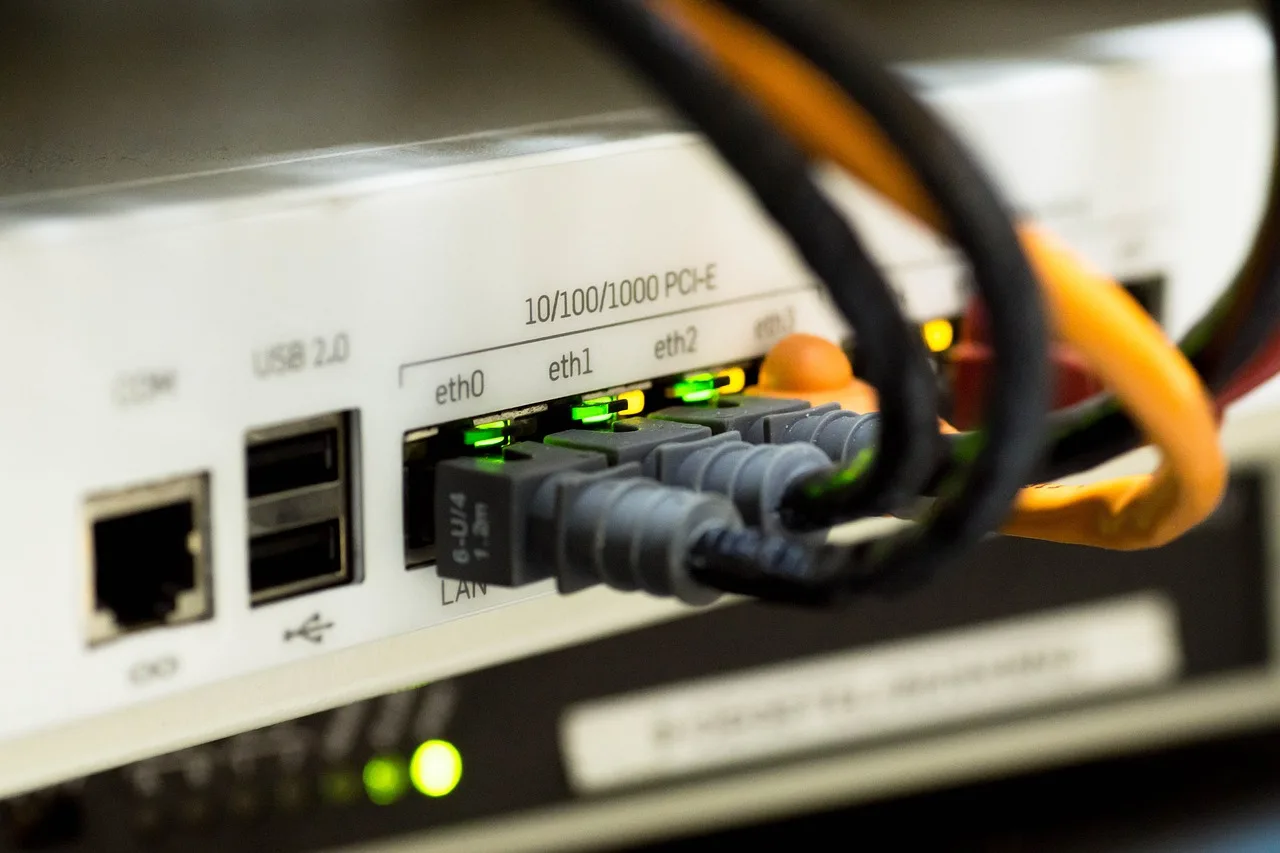Introduction
The world we live in today is more interconnected than ever before, with billions of devices and systems relying on the seamless transfer of data. At the core of this interconnectedness lies a fundamental concept known as IP addresses.
These unique numerical identifiers play a vital role in enabling devices to communicate, ensuring that data reaches its intended destination across the vast expanse of the internet. IP addresses, short for Internet Protocol addresses, are numerical labels assigned to each device participating in a computer network that uses the Internet Protocol for communication.
They serve as a means to identify and locate devices within a network or on the internet. Without IP addresses, it would be impossible for our computers, smartphones, tablets, servers, and other networked devices to communicate with each other effectively.
Among the different versions of IP addresses currently in use, IPv4 (Internet Protocol version 4) and IPv6 (Internet Protocol version 6) stand out as the two main iterations that have shaped modern networking. While both versions share the common objective of facilitating communication between devices over networks and the internet, they differ significantly in their design structures and capabilities.
Brief Explanation of IP Addresses and Their Importance in Networking
In order to understand why IPv4 and IPv6 are crucial to modern networking systems, it is essential to grasp the concept of IP addresses themselves. Think of an IP address as your device’s digital “home address” within a network or on the internet. It allows data packets sent from one device to find their way through various routers and switches until they reach their intended destination.
These addresses comprise numbers separated by periods (IPv4) or colons (IPv6). They consist of distinct parts that indicate specific details about network allocation and device identification.
The structure may seem complex at first glance; however, it provides a logical way for networks to organize themselves into subnets while ensuring efficient routing across the internet. The importance of IP addresses lies not only in enabling devices to communicate but also in facilitating services like website hosting, email delivery, online gaming, video streaming, and more.
Without them, these services would be impossible to access or utilize effectively. Therefore, IP addresses serve as the backbone of modern networking infrastructure, allowing for seamless data transfer and interaction across a multitude of interconnected devices.
Introduction to IPv4 and IPv6 as the Two Main Versions of IP Addresses
IPv4 and IPv6 represent two distinct generations of IP addressing protocols that have been deployed worldwide. IPv4 was the initial version developed in the 1980s and has been widely used ever since.
It uses a 32-bit numerical address format divided into four sections referred to as octets. These octets are represented by decimal numbers separated by periods (e.g., 192.168.0.1).
This addressing scheme provided approximately 4 billion unique addresses, which seemed ample at the time but has proven insufficient due to the exponential growth of internet-connected devices. On the other hand, IPv6 emerged as a response to address space exhaustion concerns resulting from IPv4’s limitations.
Developed in the late ’90s and refined over subsequent years, IPv6 introduced significant improvements over its predecessor by adopting a larger address size of 128 bits divided into eight groups separated by colons (e.g., FE80:0000:0000:0000:ABCD:1234:5678:9ABC). This expansion allows for an astronomical number of unique addresses—approximately 3.4 x10^38—ensuring that we will never run out again.
IPv4 and IPv6 coexist today within networks globally; however, their differences necessitate careful consideration when choosing which protocol is appropriate for specific applications or network environments. Understanding these distinctions is crucial for anyone involved in networking or seeking insights into how our interconnected world operates.
Overview of IPv4
IPv4, which stands for Internet Protocol version 4, is the fourth iteration of the Internet Protocol. It was developed and adopted in the 1980s as a standardized method to facilitate communication between devices on computer networks. At that time, the concept of interconnected networks began to gain prominence, and there was a need for a unified addressing system to enable data transmission across these networks.
Historical context: development and adoption in the 1980s
The development and adoption of IPv4 can be traced back to the early days of computer networking when researchers realized the potential for interconnected networks. In 1978, Internet Protocol version 1 (IPv1) was proposed as a solution for addressing networked devices. However, it did not see widespread implementation due to various limitations.
In response to these limitations, IPv4 was introduced in September 1981 as part of the Defense Advanced Research Projects Agency (DARPA) project called TCP/IP (Transmission Control Protocol/Internet Protocol). This new version addressed some important deficiencies found in earlier iterations and quickly gained acceptance among network administrators and researchers.
Structure and format of IPv4 addresses
IPv4 addresses are structured using a 32-bit binary representation divided into four octets separated by periods or dots. Each octet represents eight bits or one byte, providing a total of four bytes for an address.
This format allows for easy routing within computer networks while maintaining compatibility with existing systems that were already built around this structure. For better human comprehension, decimal-dot notation is used alongside binary representation.
In this notation, each octet is represented by its decimal equivalent ranging from 0 to 255. For example, an IPv4 address can appear like “192.168.0.1,” where each number represents an octet value corresponding to specific network locations.
Address space limitations in IPv4
One significant limitation of IPv4 is its address space. With a 32-bit address format, IPv4 can accommodate approximately 4 billion unique addresses. This number was considered sufficient during the early stages of the internet when only a limited number of computers were connected.
However, as the number of internet-connected devices grew exponentially over the years, it became increasingly clear that this finite address space would soon be exhausted. The depletion of IPv4 addresses has been a major concern for network administrators and organizations worldwide.
With the proliferation of smartphones, tablets, Internet of Things (IoT) devices, and other internet-enabled gadgets, the demand for IP addresses has skyrocketed. The exhaustion problem led to the need for a more advanced addressing system capable of accommodating an exponentially expanding networked world—enter IPv6.
Introduction to IPv6
IPv6, the successor to the widely used Internet Protocol version 4 (IPv4), was developed as a response to the growing concern of address space exhaustion in IPv4. With the exponential growth of internet-connected devices, it became evident that the limited 32-bit address space provided by IPv4 would soon be depleted. Recognizing this impending problem, the Internet Engineering Task Force (IETF) set out to design a new protocol that could accommodate this burgeoning demand and provide numerous improvements over its predecessor.
Motivation for developing a new version: address space exhaustion in IPv4
One of the primary motivations behind the development of IPv6 was addressing the critical issue of address space exhaustion in IPv4. The 32-bit format of IPv4 allowed for approximately 4 billion unique IP addresses. While this may have seemed like an ample number when initially conceived, as more and more devices joined the internet, it became clear that these addresses were rapidly depleting.
With only a finite pool available, network administrators had to resort to techniques such as Network Address Translation (NAT) to conserve addresses and enable multiple devices to share a single public IP address. However, NAT introduced complexities and limitations that hindered scalability and added administrative overhead.
Structure and format of IPv6 addresses
IPv6 addresses are structured differently from their counterparts in IPv4 and boast a significantly larger address length. Unlike IPv4’s 32-bit format, an IPv6 address consists of 128 bits divided into eight groups separated by colons.
Each group is represented using hexadecimal notation, allowing for greater flexibility when compared to decimal-dot representation used in IPv4. For example: FE80:0000:0000:0000:ABCD:1234:5678:9ABC.
The expanded length provides an astronomical pool of possible unique IP addresses, totaling approximately 3.4 x 10^38 addresses. This vast address space ensures that IP addresses will remain plentiful even as internet usage continues to grow exponentially.
Benefits and improvements offered by IPv6 over its predecessor
IPv6 brings a plethora of advantages and improvements over IPv4, making it a crucial upgrade for the future of networking. One of its most notable benefits is the enormous address space it offers.
With billions upon billions of unique addresses available, IPv6 eliminates the need for NAT and allows every device connected to the internet to have a unique, globally routable IP address. This facilitates seamless end-to-end connectivity and removes the complexities associated with NAT traversal.
Furthermore, IPv6 enhances security by incorporating built-in support for Internet Protocol Security (IPsec) at the protocol level. IPsec enables secure encrypted communication between devices without requiring additional software or configurations.
This native integration guarantees confidentiality, integrity, and authenticity of data transmitted over IPv6 networks. IPv6 also simplifies network configuration through stateless autoconfiguration.
With this feature, hosts can automatically configure their IP addresses and other network parameters without relying on external services like Dynamic Host Configuration Protocol (DHCP). Stateless autoconfiguration streamlines network administration tasks and reduces reliance on centralized configuration mechanisms.
IPv6 was developed in response to address space exhaustion in IPv4 while introducing several significant improvements over its predecessor. Its expanded 128-bit address length offers an almost unimaginably large pool of unique addresses while providing enhanced security features such as built-in encryption support through IPsec.
Additionally, simplified network configuration through stateless autoconfiguration alleviates administrative burdens associated with assigning IP addresses within networks. The adoption of IPv6 is crucial to ensure seamless connectivity for the ever-growing number of internet-connected devices in our modern world.
Key Differences between IPv4 and IPv6
Addressing
In the realm of addressing, IPv4 and IPv6 significantly differ in their approaches. IPv4 utilizes a hierarchical addressing scheme that divides the available address space into different network classes, namely Class A, Class B, and Class C. These classes are assigned based on the size of the network and its associated requirements. For example, Class A addresses are suitable for large networks, while Class C addresses are more appropriate for smaller ones.
This hierarchical system allows for efficient allocation of IP addresses but can sometimes lead to wastage due to rigid subdivisions. On the other hand, IPv6 employs a more flexible addressing model.
Instead of network classes, it opts for a uniform allocation strategy using prefix notation. IPv6 addresses consist of eight groups of four hexadecimal digits separated by colons.
This format permits an enormous number of unique addresses—approximately 3.4 x 10^38—rendering address scarcity virtually inconceivable. Additionally, unlike IPv4’s dependence on subnets and network masks for defining address space boundaries, IPv6 incorporates efficient mechanisms such as stateless autoconfiguration that facilitate streamlined network setup.
Conclusion
Understanding the key differences between IPv4 and IPv6 is crucial in comprehending the evolution of internet protocol addressing. While IPv4 relies on a hierarchical addressing scheme with its associated limitations and concerns about address exhaustion due to increasing demand for connected devices globally, IPv6 presents an innovative solution with its expanded address space and enhanced features such as built-in encryption support (IPsec) and simplified network configuration through stateless autoconfiguration.
As we embrace newer technologies such as Internet of Things (IoT) devices that require seamless connectivity across countless networks worldwide, transitioning to IPV6 becomes paramount to ensuring continued growth without compromising scalability or security concerns posed by limited address availability under IPV4. Consequently, by embracing the advancements and opportunities offered by IPv6, we can forge a more connected and sustainable digital future.
 Skip to main content
Skip to main content


